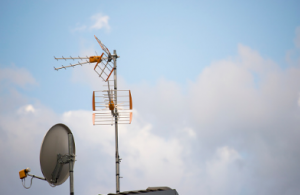A new TV antenna can bring you an incredible amount of enjoyment. Here are some tips for installing one. This guide covers choosing the suitable antenna, mounting it correctly, and testing the signal. Follow these tips, and your TV antenna installation will be a breeze. Are you having trouble installing your antenna? Follow these tips and get started on your new project today! Just be sure to follow these instructions carefully, and your new antenna will be ready to enjoy the benefits of the new technology in no time!
Installing a TV antenna
 If you’re wondering how to install a TV antenna in your home, you’ve come to the right place. First, determine the size and type of antenna you’ll need. Often, antennas and poles come assembled. For example, you’ll need a pole about 20 feet away from the house to install a TV antenna on a brick wall. Next, install the pole securely, using bolts to loosen and tighten them. Learn more here www.antennainstallationsadelaide.com.au.
If you’re wondering how to install a TV antenna in your home, you’ve come to the right place. First, determine the size and type of antenna you’ll need. Often, antennas and poles come assembled. For example, you’ll need a pole about 20 feet away from the house to install a TV antenna on a brick wall. Next, install the pole securely, using bolts to loosen and tighten them. Learn more here www.antennainstallationsadelaide.com.au.
You’ll need a coaxial cable and a carpenter’s level to get the proper angle. You’ll also need a carpenter’s level and coaxial cable to connect the antenna to the TV. An antenna with a vertical mast will have better reception. Before you begin, you should check for any existing wiring. To avoid damaging the wires, use a cable tie-down system.
Choosing the right antenna
Antenna installation is just as important as choosing the right type of antenna for your home or business. While it is possible to improve reception with a wireless signal at any location, you should pay attention to a few things when choosing your antenna. Listed below are some essential hints to get the best results from your installation. Follow these rules when choosing the proper installation method to ensure optimal performance. In addition, listed below are some tips for successful antenna installation.
Location is important. If you plan to install a television antenna, it’s essential to know where the signal tower is to avoid interference from other televisions in the home. In addition, it may be necessary to use an external tuner box to connect your antenna to your television. However, installing an external tuner box requires some experience with home networking. Finally, regardless of your location, you’ll want to select an antenna that faces the direction of the broadcast. Learn more here www.antennainstallationsadelaide.com.au.
Mounting the antenna
The proper mounting of your antenna is crucial to its performance and longevity. An incorrectly mounted antenna can result in decreased performance, improper signal reception, and even safety hazards. On the other hand, adequately mounted antennas can support a wide range of transmission frequencies and contribute to the longevity of your installation. There are a few key things to consider when mounting your antenna. Here are some tips. Listed below are essential tips for mounting your antenna. Read on to find out how to mount your antenna safely.
First, mount the antenna on the mounting bracket. The antenna must be mounted at least 4 cm from the nearest metal surface. The external antenna mount is the best option if the vehicle has a roll cage. Next, loosen the bolts on the antenna mount with a flat head screwdriver or 5/16-inch nut driver. Once the antenna is installed, tighten the cable gland. It is essential to mount the antenna properly to avoid interference and signal loss.
Testing the signal
Many standard frequency combinations can produce PIM within the cell receive band. These signals will increase the receive noise floor and bit error rate and narrow the reception area for cellular communications. To avoid PIM, assign the antennas to frequencies outside the receive band. However, new services and increasing capacity may work against preventing PIM. Older infrastructure can also increase the occurrence of PIM. In avoiding false failures, antennas should be tested regularly.
Another option for mounting an antenna on a roof is to use a chimney. This method is less expensive and easy to install, but the antenna is exposed to dangerous chimney gases, which will shorten its life and significantly diminish its performance. But make sure your chimney is stable and vertical, and never mount an antenna on a deteriorated chimney. A 10-foot un-guyed mast can damage a chimney, so don’t try this option unless you have a strong roof.